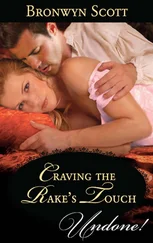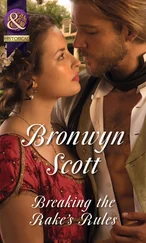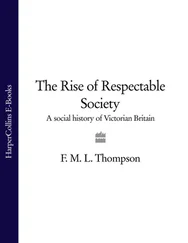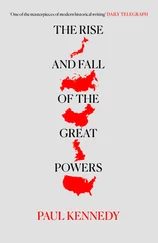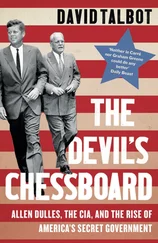1 ...6 7 8 10 11 12 ...15 The rise of the ‘civil’ gentleman was welcomed and encouraged by the crown. Distrustful of magnate power, Henry VII and subsequent Tudor monarchs were generally happier promoting gentry and commoners to high office than peers. Men who owed their advancement to royal favour naturally tended to be more grateful and loyal to their sovereign than were great noblemen. The first two Tudors created court offices specially for the gentry, binding them directly to the royal household and cutting out the aristocratic middleman. Moreover, as the size of the crown’s landed estate increased under Henry VII, so more and more gentlemen were added to the royal affinity. A similar trend was occurring in local government. The Tudors regarded county JPs – who were mostly gentry – as more reliable servants than the greater nobility, and increased their powers accordingly. It was at some point during the sixteenth century that the JP replaced the ‘good lord’ as the main pillar of local society. The gentry, therefore, like the nobility, were drawn more closely into royal service under the Tudors, as too were urban elites after 1485. Many Tudor towns acquired noble patrons at court by trading their readiness to do the crown’s bidding (which, of course, reflected well on their courtly sponsors) for royal grants of commercial and jurisdictional privileges.
The gentrification of Tudor rule had deep roots in lowland England, but beyond the southern and Midland shires it was a different story. In the northern marches, where the gentry were more thinly scattered and the priority was defence, rather than keeping to the letter of the law, the crown had traditionally governed through the region’s magnates, or great territorial overlords. Henry seemed willing at first to let at least one of the leading marcher families – the Percys, earls of Northumberland – retain their influence in the region. But he was distrustful of their tendency to assert their autonomy, and, following the murder of the 4th earl in a tax revolt in 1489, he took the opportunity to spread offices and authority more widely among less powerful peers and leading gentry families. The only great nobleman that he trusted with power in the North was the earl of Surrey, who was a southerner and governed entirely on royal sufferance. Henry’s cautious – indeed, suspicious-minded – policy in the North would prove counterproductive, however. His mistrust of the region’s most powerful noblemen, combined with his unwillingness to pay for border garrisons and a standing defence force, led to a virtual collapse in law and order in the northern marches; and peace with Scotland between 1502 and 1509 removed what little incentive existed in London to address the problem.
Sidelining the great landed nobility would prove impossible in Henry’s most turbulent marcher society: Ireland. Like earlier English kings, Henry VII attempted to maintain Ireland in a semblance of order – and nominal obedience to the English crown – by relying on the most powerful members of the Irish nobility to govern in the king’s name. If Henry had one indisputably over-mighty subject it was the ‘Old English’ magnate Gerald Fitzgerald, 8th earl of Kildare, who, as one Tudor chronicler recalled, was ‘without great knowledge or learning’ yet ‘a mightie man of stature, full of honour and courage’, ‘a warrior incomparable’. 18As lord deputy of Ireland – that is, the king’s representative in Irish government – Kildare was in theory answerable to Henry. In practice, however, the unsettled state of English affairs from the mid-1480s meant that he was answerable to no one, and indeed entertained ambitions of becoming an Irish version of Warwick the Kingmaker. It was Kildare, as we have seen, who supplied the 4,000 Irish troops for Simnel’s invasion in 1487. Yet Henry had little alternative but to acquiesce in Kildare’s political dominance in Ireland. Henry tried a variety of tactics in order to strengthen his grip on the territories of the Pale. He built up the power of Kildare’s rivals, the Butlers, earls of Ormond, and by 1492 felt confident enough to risk replacing Kildare as lord deputy with an English interloper: the experienced soldier and administrator Sir Edward Poynings. But the English newcomer, with his patent of appointment from the king, was no match for the earl of Kildare, with his extensive estates, regional influence within the Pale, and huge following among the Old English and the Gaels. By the mid-1490s, Henry conceded that he had no alternative but to revert to the well-tried policy of English kings in Ireland: rule through – rather than in rivalry with – the most powerful of the native Anglo-Irish nobility.
This policy of vicarious royal government brought one signal advance: the consolidation of English rule in eastern and central Ireland. Reinstalled as lord deputy in 1496, Kildare endeavoured not merely to defend the ‘Englishry’ in Ireland but to strengthen his and the crown’s authority beyond the frontiers of the Pale. During the late 1490s and early 1500s he mounted military expeditions and conducted progresses deep into the Gaedhealtacht, visiting parts of Ireland that had seldom seen any royal representative. In 1504, his Gaelic allies and Pale levies of billmen (infantry wielding halberds) and archers combined to defeat supposedly the mightiest Gaelic war host for three centuries at the battle of Knockdoe, near Galway, in the far west of Ireland. Kildare’s harrying of the Gaels was to come to an abrupt end in 1513 when he was shot by one of them while watering his horse in the River Barrow. But even had he lived longer he would not have been able to bring the Gaedhealtacht under full obedience to the crown. To tame the Gaelic warlords of northern and western Ireland would require human and material resources that were beyond even the most powerful of Tudor magnates.
Henry VII can take some of the credit for the modest resurgence of royal authority in Ireland by the early sixteenth century, from its nadir fifty years earlier. In restoring the Kildare ascendancy he had recognised the necessity of laying aside some of his kingly pride and distrust of his great noblemen. But this decision was made easy for him anyway, because the alternative – bringing Ireland under direct rule from England – was a waste of time and money. Henry’s (mostly) benign neglect of his lordship of Ireland reflected a fundamental political truth, which was that the foundation of his power lay at the centre of his realm, not on the peripheries. It was natural therefore that he and his advisers looked to replenish royal authority at its roots, and here they were fortunate in that the great recession that had blighted the reigns of Henry VI and Edward IV had ended by the 1490s. No longer could ambitious magnates like Warwick the Kingmaker foment popular rebellion on the (wholly unkeepable) promise of alleviating hardship and bringing back the good times of old. Although tax revolts continued intermittently under the Tudors, on the relatively rare occasions when the people resorted to organised violence, they did so to restore what they saw as the traditional order, not to overthrow their king, as they had done a generation earlier. And as the economy strengthened so too did the government’s military resources, making it harder for dynastic rivals to wage war on anything like equal terms. Henceforth, there would be room for only one over-mighty power in Tudor England, and that was the crown itself.
Law state and war state
From the distance of James I’s reign, in the early decades of the seventeenth century, the philosopher and royal biographer Francis Bacon (1561–1626) recounted a ‘merry tale’ concerning Henry VII’s pet monkey. The king, being ‘full of apprehensions and suspicions’, kept a notebook in which he recorded his secret observations about ‘whom to employ, whom to reward, whom to inquire of, whom to beware of’ – and finding this notebook the monkey tore it in pieces, ‘whereat the court which liked not those pensive accounts was almost tickled with sport’. 19This story, though probably apocryphal, is nevertheless revealing of what contemporaries took to be a defining aspect of Henry’s style of kingship. The first of the Tudor monarchs never forgot that he had usurped the crown from a usurper, and that as fortune and his friends had raised him up, so fortune and his enemies might cast him down. If he was ‘haunted with sprites’, as Bacon termed it – or paranoid, as we might – it was not without reason. 20
Читать дальше




